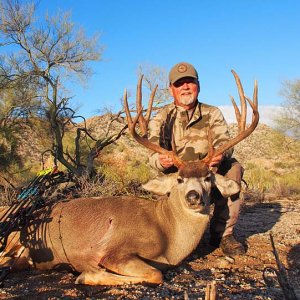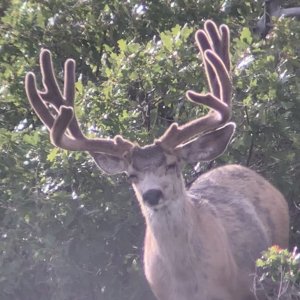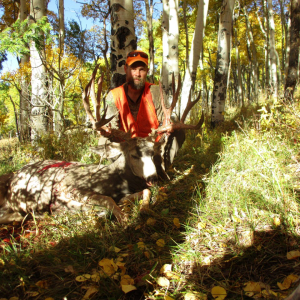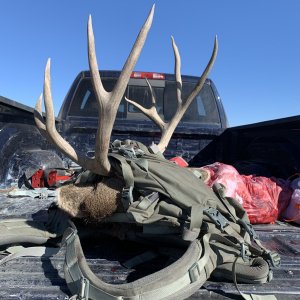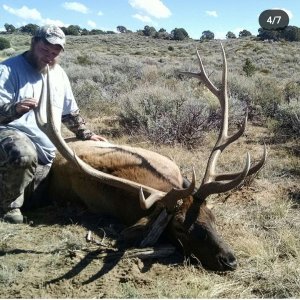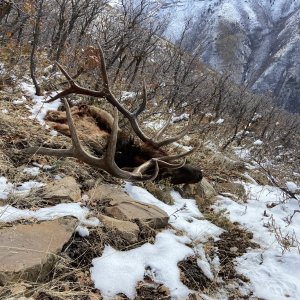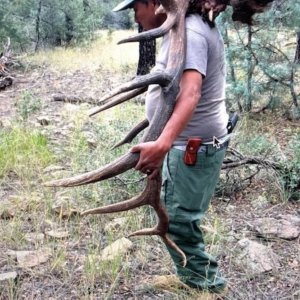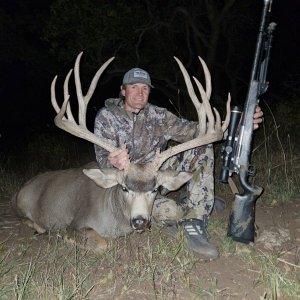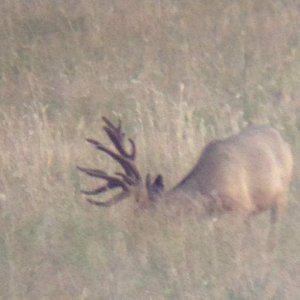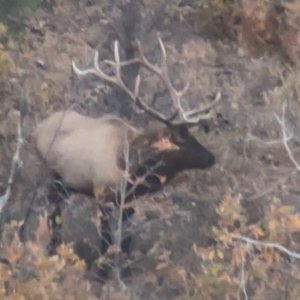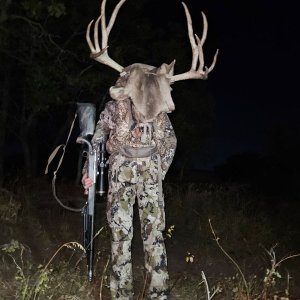BlueMountainAdventures
Active Member
- Messages
- 384
Hey guys, ODFW actually replied in detail to my concers!!!! Here is what was wrote....
I just got done reading the MDI plan. I have a few questions and comments.
1) As you are aware, mule deer are in bad BAD shape. Why not do drastic measures to correct this? Doing 5 "project" units is lame.
Mule deer populations throughout the western United States have been declining for several decades. The cause of this downward trend is likely a combination of many factors, including habitat degradation and fragmentation. As you noted, five Units have been selected to receive management strategies specifically designed to improve mule deer populations during the initial phase of The Oregon Mule Deer Initiative. The five Units identified are Steens Mtn. , Warner, Heppner, Murderers Creek, and Maury.
Management actions will vary from Unit to Unit and will be monitored to find out which actions are most effective; actions could include:
Increased Enforcement (saturation patrols)
Manage vehicular conflicts (Travel Management, ATVs)
Regulation Changes
Predator management (may include some additional predator control in some Units)
Habitat improvements
? Water improvements (guzzlers, spring developments, etc.)
? Forage improvement, increase shrubs, replace cheatgrass
? Prescribed fire
? Juniper removal
I understand that you may consider 5 Units ?lame? but there will be hundreds of thousands of dollars spent in each Unit over the next few years (the Heppner Unit has a five million dollar multi-year project). Activities conducted in these initial Mule Deer Initiative Units will be monitored and evaluated with the intent of applying the most successful management actions to other Units. Funds are not unlimited; hopefully we can learn which types of projects have the most benefit for mule deer and spend future dollars efficiently.
2) When some of the units used to be 4pt or better, it was great on the deer herds.
Point regulations are not always the simple solution they seem to be. Wildlife Division Administrator, Ron Anglin?s first job with ODFW back in the late 70?s was on the Steens Mtn Mule Deer research project. Following are some of his observations.
?There certainly were more deer on the mountain then than there are now and the 4 pt regulation was still in place. What we found over the 10 years of research was that the average 4 pt buck on the Steens was 2 ? years old. Over time more and more 3 pts were showing up (indicating that hunters were removing the animals from the breeding population that were genetically disposed to be 4 pts). And the largest bucks that I saw were consistently 3 pts. I base these observations after living on the mountain for two years and riding the western canyons on horseback tracking and counting deer all summer, then following them on the winter range on foot all winter, coupled with helicopter flights, airplane flights and ground counts on both the east and west sides of the mountain.?
The nearby Trout Creek Mountains had similar hunting except for a ?visible antler? bag limit. The Trout Creeks developed the reputation as the place to go for a big buck. There are many factors but with a visible antler regulation some hunters shoot smaller bucks allowing the big to get bigger. With a 4 point regulation most bucks are harvested as soon as they have the required number of points. Oregon is not alone in this experience; many western states have reduced their use of 4 point regulations for deer.
3) Native Americans are hurting the deer and elk populations. What can be done about this issue? Why cant they hunt whenever they want on their reservations, and if they want to hunt public lands, have the correct tags? You can not manage a herd if there is an unknown (Indians)
The level of Native American harvest varies from area to area and like disease, roadkill, and predation it is one of the factors we can not quantify. It is part of the overall background mortality considered when seasons are established.
4) GET RID OF MAJOR PREDATORS!!!!!! PERIOD! Make money by allowing cougar hunts with dogs, not spend money for a gov hunter to kill them!
The Department recognizes predators may impact deer and elk populations under some conditions and has taken steps to manage predators. You are probably aware of the increase since 1994 when the voters passed ballot measure 18 which made it illegal for sport hunters to use dogs to hunt cougar or bear in Oregon . Since that time steps have been taken to increase cougar hunting opportunity. Changes include reducing the price of a resident cougar tag from $53.50 to $11.50 (now $14.50), reducing the price of a nonresident tag from 151.50 to $14.50, changing from controlled hunts to a general season, and increasing the annual bag limit to two (requires two tags be purchased). Beginning in 2010 the season will be increased to year-round statewide and there will not be a tag sale deadline for the Additional Cougar Tag.
The Department has also implemented ?Cougar Target Areas?, these are areas where in addition to cougars taken during hunting season and in response to individual damage complaints there is also administrative cougar removal. Cougar Target Areas are designed to use proactive management removal of cougars to reduce conflicts with livestock, human safety, or other game mammal populations.
For the past three years most of the Heppner Unit was managed as a Cougar Target Area with the goal of increasing elk calf survival. During that time the calf ratio (calves per 100 cows) increased from approximately 15 calves/100 cows to 30 calves/100 cows. Four new Target Areas are in the planning stages, two to benefit elk (Wenaha and Ukiah) and two to try to improve mule deer numbers in the Warner and Steens Mountain Units; if these Units also show positive results Cougar Target Areas in other Units will be considered.
5) Limit tags DRAMATICALLY!
Tags numbers are established to maintain buck ratios (bucks/100does) near the management objectives. Hunter numbers have been reduced substantially in most areas during the past 30 years and are far below the level of the good old days of general seasons. Hunting bucks has little effect on the size of the population; doe and fawn survival are the more critical factors. An ongoing research project in central Oregon is finding doe mortality by poachers is at a level similar to the legal buck harvest.
6) NO MORE GENERAL ARCHERY DEER HUNTS IN EASTERN OREGON .
Hunting Regulations including archery seasons are discussed each year.
7) Limit ATV use during deer seasons.
The Department authority to restrict ATV use is essentially limited to Department lands. Both the BLM and Forest Service are working on revisions to their travel management plans.
8) Shorten season for a few years.
Reducing tag numbers has a similar effect; it reduces harvest but provides a fair opportunity for those hunters fortunate enough to draw a tag.
Thanks for reading my concerns and comments
Thank you for the comments and recommendations; they will be included in the information provided to the Oregon Fish and Wildlife Commission
Tom Thornton
Game Program Manager
I just got done reading the MDI plan. I have a few questions and comments.
1) As you are aware, mule deer are in bad BAD shape. Why not do drastic measures to correct this? Doing 5 "project" units is lame.
Mule deer populations throughout the western United States have been declining for several decades. The cause of this downward trend is likely a combination of many factors, including habitat degradation and fragmentation. As you noted, five Units have been selected to receive management strategies specifically designed to improve mule deer populations during the initial phase of The Oregon Mule Deer Initiative. The five Units identified are Steens Mtn. , Warner, Heppner, Murderers Creek, and Maury.
Management actions will vary from Unit to Unit and will be monitored to find out which actions are most effective; actions could include:
Increased Enforcement (saturation patrols)
Manage vehicular conflicts (Travel Management, ATVs)
Regulation Changes
Predator management (may include some additional predator control in some Units)
Habitat improvements
? Water improvements (guzzlers, spring developments, etc.)
? Forage improvement, increase shrubs, replace cheatgrass
? Prescribed fire
? Juniper removal
I understand that you may consider 5 Units ?lame? but there will be hundreds of thousands of dollars spent in each Unit over the next few years (the Heppner Unit has a five million dollar multi-year project). Activities conducted in these initial Mule Deer Initiative Units will be monitored and evaluated with the intent of applying the most successful management actions to other Units. Funds are not unlimited; hopefully we can learn which types of projects have the most benefit for mule deer and spend future dollars efficiently.
2) When some of the units used to be 4pt or better, it was great on the deer herds.
Point regulations are not always the simple solution they seem to be. Wildlife Division Administrator, Ron Anglin?s first job with ODFW back in the late 70?s was on the Steens Mtn Mule Deer research project. Following are some of his observations.
?There certainly were more deer on the mountain then than there are now and the 4 pt regulation was still in place. What we found over the 10 years of research was that the average 4 pt buck on the Steens was 2 ? years old. Over time more and more 3 pts were showing up (indicating that hunters were removing the animals from the breeding population that were genetically disposed to be 4 pts). And the largest bucks that I saw were consistently 3 pts. I base these observations after living on the mountain for two years and riding the western canyons on horseback tracking and counting deer all summer, then following them on the winter range on foot all winter, coupled with helicopter flights, airplane flights and ground counts on both the east and west sides of the mountain.?
The nearby Trout Creek Mountains had similar hunting except for a ?visible antler? bag limit. The Trout Creeks developed the reputation as the place to go for a big buck. There are many factors but with a visible antler regulation some hunters shoot smaller bucks allowing the big to get bigger. With a 4 point regulation most bucks are harvested as soon as they have the required number of points. Oregon is not alone in this experience; many western states have reduced their use of 4 point regulations for deer.
3) Native Americans are hurting the deer and elk populations. What can be done about this issue? Why cant they hunt whenever they want on their reservations, and if they want to hunt public lands, have the correct tags? You can not manage a herd if there is an unknown (Indians)
The level of Native American harvest varies from area to area and like disease, roadkill, and predation it is one of the factors we can not quantify. It is part of the overall background mortality considered when seasons are established.
4) GET RID OF MAJOR PREDATORS!!!!!! PERIOD! Make money by allowing cougar hunts with dogs, not spend money for a gov hunter to kill them!
The Department recognizes predators may impact deer and elk populations under some conditions and has taken steps to manage predators. You are probably aware of the increase since 1994 when the voters passed ballot measure 18 which made it illegal for sport hunters to use dogs to hunt cougar or bear in Oregon . Since that time steps have been taken to increase cougar hunting opportunity. Changes include reducing the price of a resident cougar tag from $53.50 to $11.50 (now $14.50), reducing the price of a nonresident tag from 151.50 to $14.50, changing from controlled hunts to a general season, and increasing the annual bag limit to two (requires two tags be purchased). Beginning in 2010 the season will be increased to year-round statewide and there will not be a tag sale deadline for the Additional Cougar Tag.
The Department has also implemented ?Cougar Target Areas?, these are areas where in addition to cougars taken during hunting season and in response to individual damage complaints there is also administrative cougar removal. Cougar Target Areas are designed to use proactive management removal of cougars to reduce conflicts with livestock, human safety, or other game mammal populations.
For the past three years most of the Heppner Unit was managed as a Cougar Target Area with the goal of increasing elk calf survival. During that time the calf ratio (calves per 100 cows) increased from approximately 15 calves/100 cows to 30 calves/100 cows. Four new Target Areas are in the planning stages, two to benefit elk (Wenaha and Ukiah) and two to try to improve mule deer numbers in the Warner and Steens Mountain Units; if these Units also show positive results Cougar Target Areas in other Units will be considered.
5) Limit tags DRAMATICALLY!
Tags numbers are established to maintain buck ratios (bucks/100does) near the management objectives. Hunter numbers have been reduced substantially in most areas during the past 30 years and are far below the level of the good old days of general seasons. Hunting bucks has little effect on the size of the population; doe and fawn survival are the more critical factors. An ongoing research project in central Oregon is finding doe mortality by poachers is at a level similar to the legal buck harvest.
6) NO MORE GENERAL ARCHERY DEER HUNTS IN EASTERN OREGON .
Hunting Regulations including archery seasons are discussed each year.
7) Limit ATV use during deer seasons.
The Department authority to restrict ATV use is essentially limited to Department lands. Both the BLM and Forest Service are working on revisions to their travel management plans.
8) Shorten season for a few years.
Reducing tag numbers has a similar effect; it reduces harvest but provides a fair opportunity for those hunters fortunate enough to draw a tag.
Thanks for reading my concerns and comments
Thank you for the comments and recommendations; they will be included in the information provided to the Oregon Fish and Wildlife Commission
Tom Thornton
Game Program Manager


